Plenary Lectures & Symposia
SERMACS 2022
Nobel Laureate and Plenary Lectures
The SERMACS 2022 Organizing Committee is delighted to present a strong scientific program in a diversity of areas including these outstanding plenary lectures.
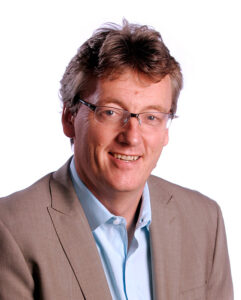
Nobel Laureate Lecture
David MacMillan - 2021 Nobel Prize in Chemistry
McDonnell Distinguished University Professor of Chemistry at Princeton University, Merck Center for Catalysis, Princeton University
Friday, Oct. 21, 5:00p, Ballroom A
The Development of Asymmetric Organocatalysis and Metallaphotoredox
This lecture will first discuss the advent of organocatalysis in my laboratory. As part of this overview, we will highlight why organic catalysts have become widely explored in modern synthetic chemistry
This lecture will also discuss the application of visible light photocatalysis to the discovery or invention of transformations that will be conceptually or synthetically valuable (and sometimes hopefully both). We will describe why a healthy balance of reaction discovery and mechanistic understanding has been important to the development of a field of research that is now being widely adopted in both industrial and academic settings. In particular, we will discuss the application of photocatalysis to the development of new metallaphotoredox reactions involving copper, a development that we hope will have an impact on the discovery of new biologically relevant molecules.
Plenary Lecture Speakers
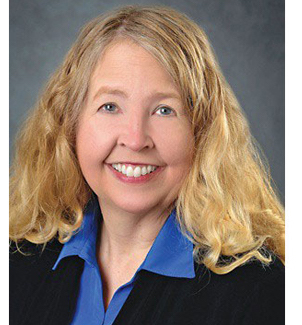
Angela Wilson
John A. Hannah Distinguished Professor of Chemistry at Michigan State University and 2022 American Chemical Society President
Wednesday, Oct. 19, 5:00p, Ballroom A
Future of the Chemical Sciences: The Transformative Age of Chemistry
Throughout history, periods of time have been marked by human progress – the Iron Age, the Bronze Age, the Industrial Age, and, in more modern times, the Information Age. For chemistry, several periods have been referred to as the “Golden Age” – the golden age of alchemy (~1300-1700), the Golden Age of Science and Technology (~780-1248 CE), the Golden Age of Science (~1950’s), Gold Age of Chemistry (~1920’s-1960’s), and numerous references to the Golden Age of Chemistry. Looking into the next decades, we are ushering in a new age – the Transformative Age of Chemistry –with vital global challenges that must be addressed worldwide. Challenges such as the growing need for food, water, and energy; increasing scarcity of vital elements; melting of the polar ice caps; addressing sustainable processes and products; and so many more, call for chemical solutions. The American Chemical Society provides critical linkages and resources that enable us to meet the challenges of the present and future, providing scientific resources, development of our future workforce, global engagement, and encouragement of budding scientists to ultimately improve people’s lives through the transforming power of chemistry
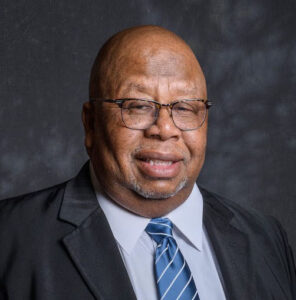
Isiah M. Warner
Boyd and Phillip W. West Professor of Surface and Analytical Chemistry and the Vice President for Strategic Initiatives at Louisiana State University
Thursday, Oct. 20, 8:30a, Ballroom A
Model Programs for Broadening Diversity and Participation in STEM
In the United States, less than half of the students who enter into science, technology, engineering, and mathematics (STEM) undergraduate curricula as freshmen will graduate with a STEM degree. For under-represented groups, that number is considerably less. An increased need for innovative initiatives that promote undergraduate retention and achievement within STEM exists. The Louisiana Science, Technology, Engineering, and Mathematics (LA-STEM) Research Scholars Program at Louisiana State University has developed a premier model for increasing persistence and achievement within the STEM disciplines. For more than a decade, LA-STEM has holistically provided quality mentoring, effective learning strategies, unique undergraduate research opportunities, leadership and professional development, and intensive graduate school preparation to a diverse population of STEM undergraduates. Program success has included an 89% overall graduation rate in STEM, considerable national award/fellowship recognition, high matriculation of students into post-graduate programs, as well as notable reduction in the achievement gap between underrepresented and female participants in comparison to majority males. At the graduate level, the Department of Chemistry at Louisiana State University has developed a model program for retaining under-represented students at the doctoral level. The undergraduate and graduate programs will be discussed in this talk
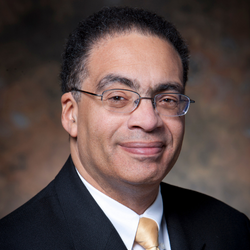
Victor R. McCrary, Jr.
Vice President for Research, Professor of Chemistry, Office of University Research, The University of the District of Columbia and Vice-Chair National Science Board
Thursday, Oct. 20, 5:00p, Ballroom A
NSB Vision 2030: A Call to Action
In May 2020, the National Science Board published Vision 2030, which articulates a roadmap for the Nation to follow to maintain its position as a global innovator over the next decade. This includes investments and advocacy for defining the benefits of research to our society, expanding the geography of innovation in our country, fostering a global community in science and technology, and most importantly the development of STEM talent. Over the past two years, the urgency has increased concerning the economic and national security of the United States in terms of global competitors and our ability to maintain our competitive posture as we face a ‘Sputnik II’ moment in our history. This presentation will describe the challenges we face, the elements of Vision 2030 which can help restore our science and technology leadership, and the importance of developing a diverse, domestic STEM talent base as the country’s top priority.
SPECIAL EVENT

Victor R. McCrary, Jr.
Vice President for Research, Professor of Chemistry, Office of University Research, The University of the District of Columbia and Vice-Chair National Science Board
Thursday, Oct. 20, 2:00 – 4:00 pm, Room 209 A/B
Meeting with Puerto Rico Representatives
Main Topics
Challenges
The U.S. is at an inflection point in science and engineering. We face multiple, significant challenges.
- Because countries around the world, especially China, are investing in science and engineering, the US is less dominant on important measures of scientific and engineering performance. These include patenting and publications. The US global share of investment in research and development and its global share of knowledge and technology intensive services are also declining. However, the U.S. still leads in both of these areas.
- We’re not doing nearly enough to develop our domestic STEM talent. US science and mathematics test scores are weak compared to America’s main peer countries and our math scores have been stagnant for years. We also have significant and long-standing disparities in K-12 STEM education by race, by socio-economic status, and by region. And in higher education, cost is a barrier for many Americans.
- While the U.S. needs to do more to develop domestic STEM talent, we also need to attract international STEM talent that has long been critical to U.S. S&E leadership.
- To recap: we must address these challenges. Developing Diverse domestic STEM talent, and attracting the best and brightest from abroad, and keeping U.S. leadership on key measures of S&E performance are not “nice-to-haves.” They are essential to our future prosperity, our health, and our national security.
Opportunities
- Despite these challenges, we have great opportunities to strengthen U.S. science and engineering. STEM is a driver of our economy. STEM jobs represent a growing share of all jobs; 23% of all jobs nationwide are STEM jobs. These jobs are key to individual prosperity and opportunity; they offer better pay and job security relative to other jobs available at similar educational levels and are more recession-proof. And more than half of the 35 million STEM jobs nationwide do not require a bachelor’s degree. How are we developing the Skilled Technical Workforce?
- States play a vital role in our S&E enterprise. They are engines of education, workforce development, and economic growth. All 50 states shape and contribute to our nation’s strength in S&E. Each state has unique S&E assets and expertise. Some states have a high proportion of skilled technical workers, people without bachelor’s degrees who work in STEM jobs. Other states have a high proportion of workers with S&E degrees at the bachelor’s level or above. Across the country, higher education institutions receive a substantial amount of federal R&D funding for research and developing the STEM workforce. Some states have high rates of patenting. And many states have combinations of all these features.

Erick M. Carreira
Head of Department of Chemistry and Applied Biosciences at ETH Zürich
Saturday, Oct. 22, 8:30a, Ballroom A
Chemistry and Biology of Natural Products
The lecture will include discussion and analysis of recent natural product targets that have been synthesized in the group. It will focus on target-oriented synthesis as a driver for the generation of novel bioactive agents, methods and approaches. The methods involve novel and unexpected reactivity as well as unusual building blocks that are fully integrated to produce efficient synthetic pathways
SERMACS 2022 Symposia
The SERMACS 2022 Organizing Committee is delighted to present a number of outstanding symposia covering a diversity of timely topics. If you are interested in participating in any of these activities, please contact the symposia organizers.
Sustainabilty Goals
Social
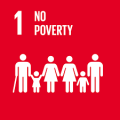
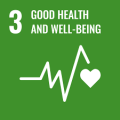

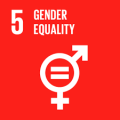
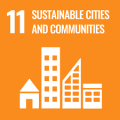
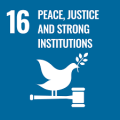
Economic
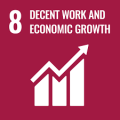
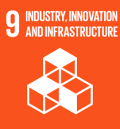
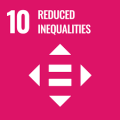
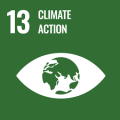
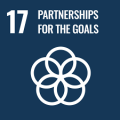
Environmental
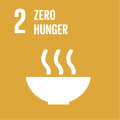
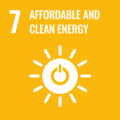
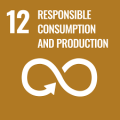

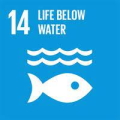
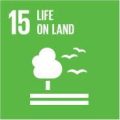
Forensic Science
Symposium on Forensic Chemistry (I and II)
Organizer: Jose Almirall, Florida International University (FIU)
(I) Thursday, Oct. 20, 1:25 – 4:20p, Room 201 A, and (II) Friday, Oct. 21, 8:30a – 12:20p, Room 201 A
This symposium will focus on new developments in forensic and analytical chemistry innovations that address current challenges in forensic chemistry practice. The presentations will highlight novel research findings, the importance of the establishment of the Organization of Scientific Area Committees (OSAC) and the impact of standardization on the practice of forensic chemistry. Other presentations will include research funded by the National Science Foundation-funded Center for Advanced Research in Forensic Science, the only Industry University Cooperative Center (IUCRC) devoted to forensic science. Several topic areas within forensic chemistry will be highlighted including drug analysis, toxicology, materials characterization and the use of chemometrics for interpreting data for use in court.
There will be a poster session: Thursday, Oct. 20, 10:00a – 12:00m, Room 208 B
Surface Chemistry
Surface Chemistry: Polymer Science, Self-assembly, and Bio-interfaces (I and II)
Organizers: Rosalynn Quiñones, Associate Professor, Marshall University
(I) Wednesday, Oct. 19, 8:30a -12:05p, Room 203 A, and (II) Thursday, Oct. 20, 8:30a -12:20p, Room TBA
This symposium will focus the importance and the function of colloid and surface science in conjunction with polymer, self-assembly techniques, and formation of interface for biological functions. Surface, interface, and polymer sciences are research areas that encourage global and multidisciplinary collaborations by encouraging scientific discussions. Research is moving towards the relationship of surface modification with the addition of engineering of polymers, and the dynamic interactions between surfaces and the surfaces of biological components relevant for medical, pharmaceutical fields.
Sustainability and Green Chemistry
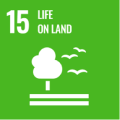
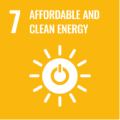
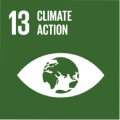
Symposium on Sustainable Green Chemistry (I, II, III, IV and V)
Organizer: H. N. Cheng, 2021 ACS President and USDA Agricultural Research Service (ARS), and J. C. Colberg, Pharmaceutical Sciences Small Molecules, WRDM, Pfizer Inc.
(I) Wednesday, Oct. 19, 2:30 – 4:55p, Room TBA; (II) Thursday, Oct. 20, 9:55a – 12:25p, Room 208-C; (III) Friday, Oct. 21, 8:30a – 12:25p, Room 208-C; (IV) Saturday, Oct. 22, 9:55a – 12:55p, Room 208-C; (V) Saturday, Oct. 22, 1:25 – 5:00p, Ballroom A
Ballroom A
Sustainable Green Chemistry is a valuable platform for the reduction of energy, materials, waste, and hazards on the bench and in industry. The purpose of this SERMACS 2022 symposium is to gather leading researchers, practitioners, and company representatives together to present their data, share their experiences, and discuss new products or processes relating to sustainability and green chemistry. A particular emphasis will be placed on applications in pharmaceutical chemistry and biobased materials. It is hoped that this forum can provide a good source for useful information as well as a good opportunity for networking and collaboration. The symposium will consist of invited and contributed talks. Each speaker will be given 30 minutes, including a short Q/A section.
Sustainable Nanotechnology
Co-Organizers: Rigoberto Hernández (Johns Hopkins), Christy L. Haynes (University of Minnesota) and Sara E. Mason (University of Iowa)
Wednesday, Oct. 19, 2:25 – 4:40p, Room 104-A
1With the ever increasing use of engineered nanoparticles (ENPs) to address grand challenges in energy, water, agriculture, and human health, it becomes imperative to ensure that ENPs are benign and sustainable. The characterization and prediction of ENP properties and functions at multiple space and time scales has emerged from synergistic application of computational and experimental tools. Chemical expertise is particularly critical to understand the molecular drivers of interactions between ENPs and biological or ecological systems. Speakers in this session will present the latest advances in this area, providing broad perspectives on innovation in the development and applications of ENPs that are also sustainable while considering the long-term legacy of sustainable nanotechnology.
The Chemistry of Solar Fuels (I, II, III, IV & V)
Co-organized by Dr. Jenny Yang (UC-Irvine), Dr. Jorge L. Colón (UPR-Río Piedras), Dr. Jillian Dempsey (UNC-Chapel Hill), and Dr. Jesús Velázquez (UC-Davis).
(I) Wednesday, Oct. 19, 1:25 – 4:40p, Ball Room A; (II) Thursday, Oct. 20, 9:55a – 12:55p, Room 208 A; (III) Thursday, Oct. 20, 1:25 – 4:40p, Room 208 A; (IV) Friday, Oct. 21, 8:30a – 12:20p, Room 208 A; (V) Friday, Oct. 21, 1:25 – 3:40p, Room 208 A
The conversion of solar energy into chemical fuel is one of the “Holy Grails” of 21st Century Chemistry. The Chemistry of Solar Fuels symposium will cover the most-current fundamental research and contributions being made to solve the energy and climate crisis tapping solar energy as a sustainable energy source. Chemistry is providing innovation through creative, new ideas to improve our life and secure a clean and sustainable future through solar energy. The symposium will consist of five sessions on (a) heterogeneous catalysis, (b) molecular catalysis, (c) light-induced water splitting, CO2 reduction and N2 reduction, (d) membranes and electrolytes, (e) DFT/Machine Learning. Topics to be covered include the latest research on artificial photosynthesis, multielectron catalysis, hydrogen production, oxygen-evolving catalysts, carbon-dioxide reduction, and photoelectrochemical cells.
Interdisciplinary Science for Arid Lands Energy and Water Sustainability (I, II)
Co-Organizers: Verónica Bermúdez (QATAR Environment and Energy Research Institute (QEERI)), Carlos R. Cabrera (University of Texas at El Paso (UTEP)), James Kubicki (UTEP), Jenny Lawler (QEERI), and Mark Pederson (UTEP)
(I) Thursday, Oct. 20, 9:55a – 12:25p, Room 208 B; (II) Thursday, Oct. 20, 1:25 – 4:40p, Room 202 A
Various regions in the world, including the Southwestern US and Qatar, features over 300 days of full sunlight per year and most of its water comes from aquifers or seawater. This symposium will focus on the research and technology being developed to achieve energy and water sustainability in these arid lands. The symposium will be divided in four sessions: (1) Solar Energy Nanomaterials for Arid Lands, (2) Biosensors for Environmental Water Monitoring, (3) Wastewater Remediation, and (4) modeling of quantum processes. The symposium will promote the exchange of ideas on the development of new robust and reliable systems for solar energy applications, biosensing devices, water remediation, and computational applications designed to work under the high temperature and low humidity conditions found in arid lands. Speakers in this session will present the latest advances in these research areas for energy and water sustainability. The participants will provide broad perspectives on innovation and applications of novel technology.
Industrial Chemistry
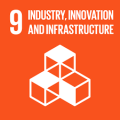
Enabling Technologies for Drug Discovery and Development
Organizer: Alec H. Christian, Discovery Chemistry, Merck Research Laboratories, Boston, MA
Wednesday, Oct. 19, 1:25 – 4:40p, Room 209 C
This symposium will cover new modalities, approaches, and methods that help progress the discovery and development of novel therapeutics. Areas of focus will include experimental and computational approaches that aid in drug discovery and development. Potential topics may include but are not limited to synthetic methodology towards medicinally-relevant scaffolds, novel lead and target-identification platforms, and structure-based drug design.
Diversity, Equity, Inclusion and Respect
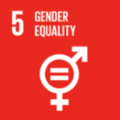
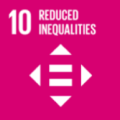
Project SEED Symposium (I and II)
organizers: Ajay Mallia (amallia@ggc.edu), Douglas Masterson (douglas.masterson@usm.edu)
(I) Friday, Oct. 21, 2:30 – 4:45p, Room 203 and (II) Saturday, Oct. 22, 1:25 – 4:20p, Room 204
Starting from 1968, ACS Project SEED helped more than 11,000 high school students to participate in a summer research program at academia, industry, or government institutions. This symposium will showcase presentations from project SEED coordinators, mentors, and committee members about successfully planning and organizing the SEED program. This symposium will also highlight the research poster presentations of Project SEED HS students.
Poster session organizers: Ajay Mallia, Georgia Gwinnett College (amallia@ggc.edu) and Douglas Masterson, The University of Southern Mississippi (douglas.masterson@usm.edu)
ACS Chemistry Festivals, non-formal chemistry education around the world
Organizer: Santiago Sandi-Ureña, PhD, School of Chemistry, University of Costa Rica, www.santiagosandi-urena.com
Wednesday, Oct. 19, 1:25 – 5:00p, Room 104 B
The “Festival de Química” founded in Puerto Rico in 2005 by Dr. Ingrid Montes has spread to Latin America, Africa, Asia, Middle East, and Europe. Since 2010 it is an official ACS Program, and since 2015 it has reached more than 3,000 volunteers and over 45,000 attendees in multiple cities in 33 countries, and through more than 80 ACS grants. The program’s Festival Training Institute, FTI, has assembled a solid network of volunteers that promotes global sustainability. The ACS Chemistry Festivals support community engagement through a purposefully designed, non-formal learning environment. The festivals celebrate the role of chemistry in daily life through safe, hands-on activities accessible for the general public. This symposium will combine talks by Festival organizers describing the design of their activities and events, and their rationale and assessment. Student organizers’ participation is encouraged to highlight their own learning through service. In this symposium participants will find a space to collaboratively develop skills to improve their festival iterations (fund-raising, event planning, design, implementation and assessment, etc.). Presenters and participants are invited to partake in a local Festival celebrated during SERMACS.
DEIR Symposium: Building inclusive DEIR communities through societal organizations
Organizers: Renã A. S. Robinson (NOBCChE, Vanderbilt University) and Bridgette Shannon (NOBCChE, 3M)
Thursday, Oct. 20, 9:55a – 12:25p, Ball Room A
Building truly inclusive communities within an organization (academic, government, industrial, private-sector, non-profit) requires both top-down and grass roots efforts. Agendas of organizational leadership inform how diversity, equity, inclusion and respect are valued and prioritized. However, whether these values are translated throughout the organization and embedded into the daily culture of the organizational constituents is also reliant on grass roots efforts that come from the bottom up. This symposium will provide several examples of how inclusive DEIR communities have been established through various organizations and importantly share best practices that can be considered by others. Additionally, the symposium will highlight challenges that still remain and prevent organizations from fully realizing inclusive DEIR communities. To close out the session a roundtable discussion will be facilitated.
WCC Symposium: Crossing Boundaries: the Resilience of Women Chemists Acá y Allá (I & II)
Organizer: Lorena Tribe, Penn State Berks, ACS WCC, lut1@psu.edu and Co-Organizer: Kelley Caflin, ACS WCC, caflinacs@yahoo.com
(I) Thursday, Oct. 20, 9:55a – 12:05p, Room 104 C; (II) Thursday, Oct. 20, 1:25 – 4:20p, Room 104 C
This symposium is to discuss the challenges and issues germane to women in the chemical enterprise, with a focus on colleagues’ experiences in Latin America and in the United States. This a follow-up to a successful symposium at the Atlanta ACS meeting, where we found that common experiences transcended geographical locations and cultural differences during the pandemic. Some presentations could resonate with attendees’ professional experiences and provide context for them, fostering a sense of community that exists beyond borders and language barriers. Highlighting unperceived or unresolved challenges in our communities is also a goal of this symposium, as is providing a space for interaction and development of networks.
The goal is to have speakers from Puerto Rico, from the mainland, and from some places in Latin America.
WCC and NOBCChE invites you to the Women Chemists Diversity, Equity, Inclusion and Respect (DEIR) Luncheonel on Thursday, October 20, 2022 at 1:00 pm in Room 208 B.
The special keynote address will be given by Dr. Laura Castillo-Page, National Academies’ Chief Diversity and Inclusion Office.
Leveraging Diversity and Inclusion for Educational Excellence
Organizers: Ben Garcia, Washington University, email: bagarcia@wustl.edu, Reni Joseph, St Louis Community College, email rjoseph15@stlcc.edu
Sponsor: Committee on Minority Affairs/ American Chemical Society
Thursday, Oct. 20, 1:25 – 4:20p, Room 208 C
The symposium titled ‘Leveraging Diversity and Inclusion for Educational Excellence’ will discuss important topics related to diversity and inclusion through keynote speakers, panel discussions, and dialogues. Participants gather for facilitated discussions on critical issues affecting higher education, such as retention of underrepresented students, student success for marginalized students, and unconscious bias.
History of Chemistry
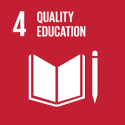
La Historia de Pioneros y Descubridores en Química (I & II)
Organizers: Mary Virginia Orna, ChemSource, Inc., 1338 North Avenue, New Rochelle, NY 10804, Phone: (914) 310-0351, email: maryvirginiaorna@gmail.com; mvorna@protonmail.com; Daniel Rabinovich (Joint School of Nanoscience and Nanoengineering, 2907 E. Gate City Blvd, Greensboro, NC 27401, Phone: (336) 285-2800, email: Dan.Rabinovich@uncg.edu).
(I) Thursday, Oct. 20, 2:05 – 4:40p, Room 202 C and (II) Friday, Oct. 21, 2:30 – 5:05p, Room 208 C
The theme of the 2022 Southeastern Regional Meeting of the ACS (SERMACS 2022) is “Chemistry Transcending Boundaries for a Sustainable Future.” The projected half-day symposium, La Historia de Pioneros y Descubridores en Química, will focus on: (a) discoveries of elements (platinum, tungsten and vanadium), (b) nanotechnology prior to 500 CE, and (c) Nobel prizewinning work in the Hispanic world that transcended cultural boundaries and continue to contribute to the sustainability of research today.
History of chemistry – Puerto Rico´s impact on chemistry.
Organizers: Cliff Padgett, Georgia Southern University, Tad Whiteside, Savannah River National Laboratory.
Friday, Oct. 21, 2:30 – 5:05p, Room 202 B
This symposium will highlight contributions to chemistry with ties to Puerto Rico. The symposium will focus on discoveries made in Puerto Rico and how Puerto Rican scientists have influenced the world. Topics of interest may include: *Discoveries in the Medical and pharmaceutical industries, stemming from the diverse botanical and marine environments of the island * Aerospace and Astrochemistry focusing on contributions from Arecibo * Contributions to Agriculture and Biochemistry, notably the sugarcane industry which extends back to the 15th century.*Studies of Geochemistry and other Earth systems, locally and with NASA.
Current Trends in Inorganic Chemistry
XRD in the Southeast – Advances in x-ray crystallography in research
Organizer: Organizer: Will Lynch and Cliff Padgett, Georgia Southern University; Dalice Pinero Cruz (UPR RP)
Thursday, Oct. 20, 9:55a – 12:05p, Room 203
This symposium will highlight the use of x-ray diffraction in the southeast region to evaluate inorganic materials, organic compounds and biomolecules. XRD plays a vital role in structure elucidation for scientists in all areas of chemistry from solid state to biochemistry. Topics of interest will include the use of crystallography to further the understanding of complex structures and the role they play in chemical and biochemical processes.
Our target will be one full day 12-16 papers, plus a small poster session.
Ligand and biomolecular contributions to metal-based therapeutics
Organizer: Arthur Tinoco (UPR-RP)
Friday, Oct. 21, 8:30 – 11:45a, Ball Room A
Metals exist in all facets of the composition of the human body. While not all metals are essential for our survival, many have shown very important biological activity that can be quite useful in maintaining our health and in treating and diagnosing disease. In recent decades, there has been much work toward elucidating the mechanisms by which metals are regulated to exhibit important roles and in developing metal compounds as therapeutic drugs for a wide range of clinical applications including anticancer, antidiabetes, antibiotic, amongst others. This expansive body of work reveals that metal ions do not operate alone in the body. Their bioavailability and bioactivity are directly related to their coordination chemistry as influenced by the heterogeneity of the physiological environment. This symposium will reveal the utility of biomolecular coordination of metals and of the ligands of therapeutic metal compounds in enabling and finetuning the functionality of the metal ions and identify key physiological interactions that attenuate metal toxicity and maximize their benefit.
Inorganic Porous and Layered Materials Symposium
Organizers: Dr. Luyi Sun (U. Connecticut), Dr. Jorge L. Colón (UPR-Río Piedras), Dr. Mario V. Ramos-Garcés (Penn State), Dr. Monica Pica (U. Pirugia, Italy)
Wednesday, Oct. 19, 8:30a -12:05p, Room 204
The symposium will consist of two sessions that will include the chemistry of nanosized layered inorganic compounds, the nanostructure and heterogeneity of materials, functional inorganic layered materials, layered organic–inorganic hybrid materials, novel layered copper–lithium phosphonates, bioinspired catalysts, inorganic solid-state chemistry, industrially significant catalysts and catalytic properties, multifunctional nanostructured materials, high performance functional materials for nanotechnology, biotechnology and micro/nano-electronics, and metal organic frameworks.
Photoinduced Processes in Macroscopic, Supramolecular and Nanoscale Inorganic Materials (I, II & III), Organizer: Angel Martí (Rice University)
(I) Thursday, Oct. 20, 1:25 – 4:20p, Room 201 B; (II) Friday, Oct. 21, 8:30 – 11:55a, Room 201 B and (II) Friday, Oct. 21, 2:30 – 4:25p, Room 201 B
This symposium will highlight research from a variety of photophysical and photochemical processes in inorganic materials. Inorganic materials will be broadly defined as nanomaterials, such as metal nanoparticles, semiconductors, nanotubes, and sheets; soft matter such as inorganic surfactants and liquid crystals; and supramolecular materials such as MOFs, zeolites, clays and layered materials. The study of photoactive organic and inorganic molecules encapsulated, adsorbed or associated with inorganic materials is also of interest for this symposium. We anticipate topics related to sensing, solar fuels, energy transfer, electron transfer, photochemical transformations, photodynamic therapy, quantum dots, and photoluminescent materials, among others.
Unusual Structure and Reactivity of Inorganic Molecules (I & II)
Organizers: Caleb Martin (Baylor University) and Stephen Westcott (Mount Allison University)
Thursday, Oct. 20, 9:55a – 12:05p, Room 209 C & (II) Thursday, Oct. 20, 1:25 – 4:40p, Room 209 C
The symposium will be focused on unique molecules which do not conform to traditional bonding theories. These span transition metals and the main group elements. Areas that will be of focus include aromatic and anti-aromatic heterocycles, unusual element-element bonds, and molecules that oppose their typical energetic minima. Encompassed in this realm is their electronic properties and reactivity.
3rd Users’ Meeting of the UPR’s MSRC X-Ray Diffraction Facility
Organizer: Dalice Pinero Cruz (UPR RP)
Wednesday, Oct. 19, 1:25 – 5:00p, Room 203
The symposium will highlight crystallographic data and published results obtained from students and researchers absorbed as users of the University of Puerto Rico’s Molecular Sciences Research Center Single Crystal X-ray Diffraction Facility. For the occasion, we will have various activities of interest to the local crystallography community. Graduate and undergraduate students, as well as research staff, will be the main presenters. There will also be a presentation on new technological advances on single crystal and powder XRD by our current instrument service provider. With this half a day symposium I aim to attract the attention of participants from the Southeast region and local pharmaceutical and biotech industires attending the conference to request services and instrument time to achieve sustainability and economical growth of the UPR’s MSRC Single Crystal X-ray Diffraction Facility.
This is a separate symposium is a separate symposium from the one on X-ray Diffraction since it will be highlighting the work of our students and researchers, and they will be the main presenters
Nanotechnology, Nanosciences, Health and Well-Being
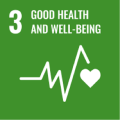
Puerto Rico NSF-PREMs Symposium (I and II)
Co-organized by Dr. Idalia Ramos (UPR-Humacao), Dr. Jorge L. Colón (UPR-Río Piedras), and Dr. Ubaldo Córdova (UPR-Mayagüez).
(I) Thursday, Oct. 20, 1:25 – 4:20p, Room 104 A and (II) Friday, Oct. 21, 8:30 – 11:25a, Room 104 A
The National Science Foundation Partnerships for Research and Education in Materials (NSF-PREM) program’s purpose is developing the next generation of materials researchers by enhancing diversity in materials research and education. PREM achieves this goal by stimulating the development of formal, long-term, collaborative research and education partnerships between minority-serving colleges and universities and the NSF Division of Materials Research (DMR)-supported centers and facilities. In Puerto Rico there are currently three active NSF-PREM programs: (a) the University of Puerto Rico at Humacao-University of Pennsylvania (UPenn) PREM program (PREM UPRH-UPENN), a partnership between the UPR Humacao and Cayey campuses and the UPenn Materials Research Science and Engineering Center (MRSEC), which began in 2004; (b) the Wisconsin-Puerto Rico PREM program, a partnership between the UPR-Mayagüez, Río Piedras and Medical Sciences campus and the University of Wisconsin-Madison (PREM-UPRM), which started in 2018, and (c) the PREM Center for Interfacial Electrochemistry of Energy Materials (CIE2M) program, a partnership between UPR-Río Piedras campus, the Ana G. Méndez University Cupey and Gurabo campuses, and the Cornell High Energy Synchrotron Source (CHESS) at Cornell University (NSF-PREM CIE2M), established in 2018. The Puerto Rico NSF-PREMs symposium will highlight the progress made by these three programs in providing research and educational opportunities in materials research to undergraduate and graduate students from Puerto Rico, including the outreach efforts made with elementary, middle, and high school teachers and students on the island.
The symposium will consist of three half-day sessions on (1) nanostructured multi-functional materials, (2) nanoscale interactions of macromolecules and organic molecules, and (3) non-equilibrium studies of interfaces. Topics to be covered include the latest research on single-atomic-layer materials and nanofibers of electro-active polymers; nanoparticle-protein interactions; catalytic materials with controlled sites by atomic layer deposition; flexible porous coordination polymers for gas capture; crystallization, polymorphism, dynamics, and structures of active pharmaceutical ingredients; dynamics of active particles in anisotropic media; active colloids templated from liquid crystals; collective behaviors of active colloids; oxygen-reduction and evolving electrocatalysts, nanostructured materials for dye-sensitized solar cells, and hybrid solid-state supercapacitors.
Nanotechnology Approaches to Biology and Medicine
Paul S. Weiss, California NanoSystems Institute and Departments of Chemistry & Biochemistry, Bioengineering, and Materials Science & Engineering, UCLA, Los Angeles, CA 90095
Wednesday, Oct. 19, 8:30a -12:05p, Ball Room A
Biology functions at the nanoscale. Thus, there are special opportunities not only to make biological measurements using nanotechnology, but also to interact directly in order to influence biological outcomes. I describe how we fabricate and use nanostructures to advance high-throughput gene editing for cellular therapies targeting genetic diseases and cancer immunotherapy. We also use microfluidics and functionalized nanostructured features in the selective capture, probing, and release of single circulating tumor cells in liquid biopsies in order to diagnose cancers and to assess the efficacy of treatments. We exploit supramolecular assembly, acoustofluidics, specific surface functionalization, and plasmonics to enable these processes. Nanoscience and nanotechnology developed from chemistry, physics, biology, engineering, medicine, toxicology, and a host of other fields. Along the way, we taught each other our problems, challenges, and approaches. The interdisciplinary communication skills that were developed and are now part of our training remain unique to the field. As a result, nanoscience contributes to a wide range of other fields, such as neuroscience and the microbiome.
*We have a global effort in nano for sustainability: https://network4sustainablenano.org/
Novel Strategies for Localized Drug Delivery (I and II)
Organizers: Bob Kane, Baylor University, Waco TX (Bob_kane@baylor.edu) and Asier Unciti-Broceta, University of Edinburgh asier.ub@ed.ac.uk
(I) Friday, Oct. 21, 8:30 – 11:45a, Room 202 A and (II) Friday, Oct. 21, 2:30 – 5:25p, Room 202 A
Most therapeutics have adverse dose-limiting side effects. These ‘off-target’ effects can be minimized if the therapeutic is localized where (and when) it is needed, limiting systemic exposure. Antibody-drug conjugates (ADCs) represent a mature example of targeted drug delivery, with eleven ADCs approved and utilized in the clinic. Besides antibody-based strategies, a wide variety of innovative approaches to localized drug delivery are being actively explored. This research is characterized by exciting multidisciplinary approaches including the development and characterization of new nanoparticles and macroscopic materials, the discovery and utilization of biorthogonal reactions and catalysts, and the design and synthesis of innovative prodrugs and linkers. This symposium will feature leading researchers presenting a broad survey of recent developments from around the world into the chemistry of localized drug delivery.
Advances in Nanomaterials for Biomedical and Biomedicinal Applications
Co-Organizers: Md Nurunnabi (University of Texas at El Paso (UTEP) and Mahesh Narayan (UTEP)
Wednesday, Oct. 19, 8:30a-12:20p, Room 104 A
Nanomaterials have attracted the attention of the biomedical community over the last few years and have since found wide-spread applications in the field of nanomedicine, as also evidenced by the approval of nanoparticle-based COVID-19 vaccines. The proposed symposium will focus on the recent advances on nanotechnology-based biomedical tools and biomedicine and their translational potential for advancing health-care and management. The symposium will consist of four sessions: (1) Nanomaterials for Biomedical Applications, (2) Biosensors for Disease Detection, (3) Nanomaterials for Drug/Vaccine Delivery, and (4) Nanomaterials for “Wearable” Devices. The symposium will promote the exchange of ideas among a broad spectrum of researchers and facilitate collaborative opportunities among interdisciplinary teams. Speakers for this season will be selected based on their submitted abstracts. Our objective is to invite pioneer nano-scientists from biomedical, chemical and bioengineering fields. The participants will provide broad perspectives on the innovation and applications of nanomaterials.
We would like to support early-career scientists and students.
Current Trends in Analytical Chemistry
Mass Spectrometry: Transcending Boundaries with Innovations in Methods & Technology (I and II)
Organizer: Christopher Chouinard (Florida Institute of Technology)
(I) Friday, Oct. 21, 8:30a – 12:05p, Room 204 and (II) Friday, Oct. 21, 2:30 – 4:55p, Room 204
Mass spectrometry remains the gold-standard analytical technique across several important fields including clinical analysis, biomedical research, and environmental monitoring. The last decade has seen an explosion of new technologies including the emergence of ion mobility spectrometry, ambient ionization sources, and novel fragmentation methods. Furthermore, advances in informatics, computational modeling, and even the incorporation of machine learning have provided a means to more comprehensively study such complex systems of interest. This symposium will showcase recent cutting-edge mass spectrometry approaches and how they can be used to transcend traditional chemical boundaries.
Current Trends in Biochemistry
Frontiers in Nucleic Acids Symposium
Organizer(s): Randy M. Wadkins (University of Mississippi) and tentatively Michael P. Stone (Vanderbilt University)
Thursday, Oct. 20, 1:25 – 4:20p, Room 104 B
For nearly four decades, the “Frontiers in Nucleic Acids” symposium has been a staple at SERMACS, where scientists from around the region and country have gathered to present talks on the current trends in biochemistry related to nucleic acids. Topics have ranged from the cellular functions of nucleic acids to their structural polymorphisms to their use as nanomaterials. Historically, this has been a well-attended symposium at SERMACS. The hiatus of the symposium due to Covid-19 was ended when the symposium began again at SERMACS 2021 in Birmingham, Alabama, co-hosted by Randy Wadkins (University of Mississippi) and Kate Hayden (Birmingham-Southern College.) Here, we propose to continue holding the Frontiers symposium into the 2020s by holding it in Puerto Rico. While the 2021 symposium was heavy with more established investigators who participated many times before, in 2022 we look forward to bringing in younger investigators and more students.
Current Trends in Organic Chemistry
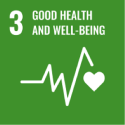
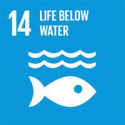
Discovery and production of bioactive marine natural products
Organizer: Yousong Ding (University of Florida) YDing@cop.ufl.edu
Wednesday, Oct. 19, 1:25 – 4:40p, Room 202 C
The marine environment is a prolific but poorly explored source of natural products possessing tremendously diverse structures and biological activities. The last decade has witnessed an explosion of new technologies in the discovery and production of bioactive marine natural products, including genome-based discovery, new sourcing strategies, advanced methods for structural determination, updated biosynthesis understanding, and new organic synthesis and synthetic biology approaches for chemical synthesis. This symposium will highlight these recent developments and showcase how they have advanced marine natural product research.
Lorem ipsum dolor sit amet, consectetur adipiscing elit. Ut elit tellus, luctus nec ullamcorper mattis, pulvinar dapibus leo.
SCHB Division
Sponsored by the ACS Board Committee on Corporation Associates Sponsorship for Chemical Business
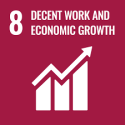
Chemical Business Best Practices
Organizer: Joseph Sabol, jsabol@chem-consult.com and Organizer and Presider: Xu Simon, xufits@gmail.com
Thursday, Oct. 20, 9:55a – 12:25p, Room 104 B
Description: Chemical Business: Resources and Best Practices (oral, poster, flash.) Entrepreneurs share their best practices and lessons learned in starting, running, and growing a chemical business. This symposium holds critical, must-know information and narrative success stories from chemical professionals.
There will be a SCHB Chemical Business Roundtable on Friday, October 21, 2:30 – 5:00 pm, Convention Center Room 104 B.
Innovations in Chemical Education
Sponsored by CHED
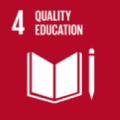
Trends in Chemistry Education
Organizer: D. Cruz-Ramirez de Arellano, University of South Florida
Wednesday, Oct. 19, 8:30a – 12:05p, 208 A
As the field of chemistry education matures, practitioners and researchers approach the processes of instruction and learning via new lenses including: the use of resources, curricula, new educational technologies, and assessment at various levels, from individuals to academic institutions. This symposium highlights the latest trends towards these efforts of updating, invigorating, and evaluating chemistry education projects.
Evaluation and Assessment in Chemistry Education
Organizer: D. Cruz-Ramirez de Arellano, University of South Florida
Wednesday, Oct. 19, 1:25 – 4:40p, 208 A
Instruction without evaluation and/or assessment cannot determine if educational goals have been met. Therefore, these are critical components guiding improvements whether at the individual (e.g. learning gains), or program levels. This simposium includes evaluation and assessments efforts at different levels of instruction and academic units.
Birds of Feather Session
This session calls all chemistry educators to discuss matters of transfer and translation between practice and research to improve cross-polination, therefore bridging the current gap that exists between these spaces. Towards the same goal, discussions will include how the scholarship of teaching and learning (SoTL) is contributing to these efforts.
Wednesday Evening – Chemical Education Poster Session
Wednesday, Oct. 19, 6:30 – 8:30p, Ball Room B
